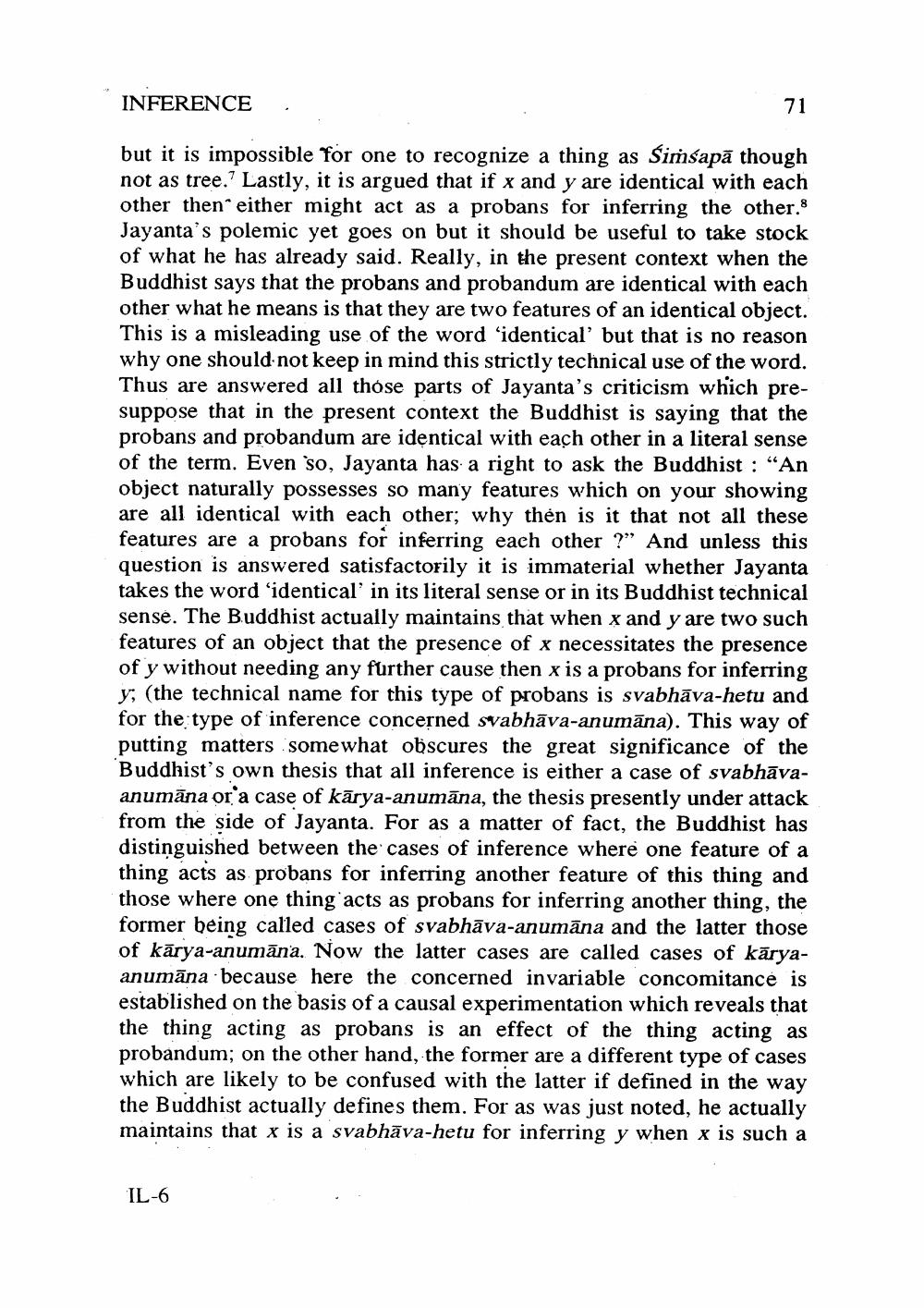________________
INFERENCE
71
but it is impossible for one to recognize a thing as Simšapā though not as tree. Lastly, it is argued that if x and y are identical with each other then either might act as a probans for inferring the other.8 Jayanta's polemic yet goes on but it should be useful to take stock of what he has already said. Really, in the present context when the Buddhist says that the probans and probandum are identical with each other what he means is that they are two features of an identical object. This is a misleading use of the word 'identical' but that is no reason why one should not keep in mind this strictly technical use of the word. Thus are answered all those parts of Jayanta's criticism which presuppose that in the present context the Buddhist is saying that the probans and probandum are identical with each other in a literal sense of the term. Even so, Jayanta has a right to ask the Buddhist : “An object naturally possesses so many features which on your showing are all identical with each other; why thén is it that not all these features are a probans for inferring each other ?" And unless this question is answered satisfactorily it is immaterial whether Jayanta takes the word 'identical' in its literal sense or in its Buddhist technical sense. The Buddhist actually maintains that when x and y are two such features of an object that the presence of x necessitates the presence of y without needing any further cause then x is a probans for inferring y; (the technical name for this type of probans is svabhāva-hetu and for the type of inference concerned svabhāva-anumāna). This way of putting matters somewhat obscures the great significance of the Buddhist's own thesis that all inference is either a case of svabhāvaanumāna or a case of kārya-anumāna, the thesis presently under attack from the side of Jayanta. For as a matter of fact, the Buddhist has distinguished between the cases of inference where one feature of a thing acts as probans for inferring another feature of this thing and those where one thing acts as probans for inferring another thing, the former being called cases of svabhāva-anumāna and the latter those of kārya-anumāna. Now the latter cases are called cases of kāryaanumāna because here the concerned invariable concomitance is established on the basis of a causal experimentation which reveals that the thing acting as probans is an effect of the thing acting as probandum; on the other hand, the former are a different type of cases which are likely to be confused with the latter if defined in the way the Buddhist actually defines them. For as was just noted, he actually maintains that x is a svabhāva-hetu for inferring y when x is such a
IL-6




